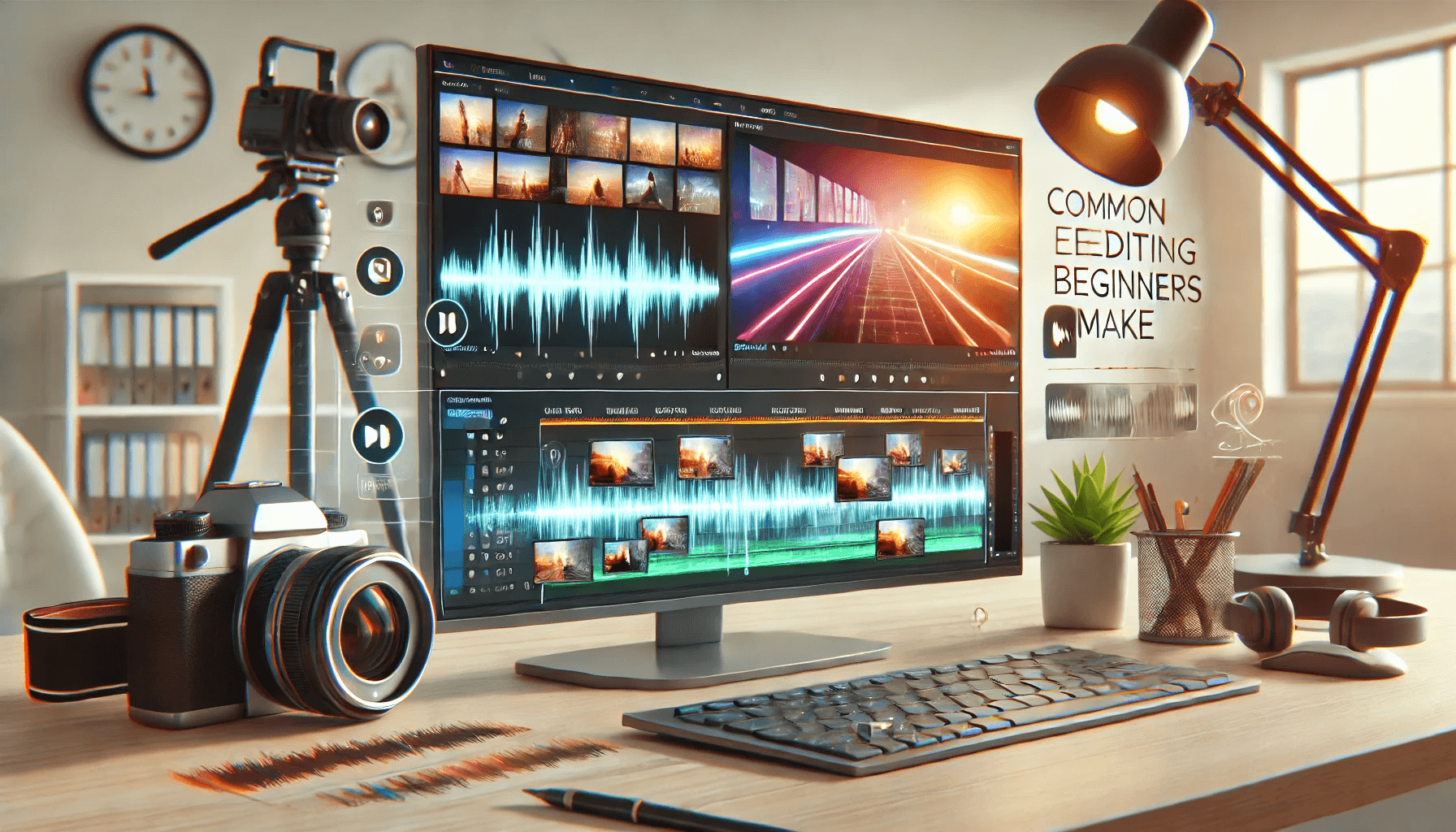When it comes to video editing, even the most seasoned professionals, like Vageesh Potnis, had to start somewhere. Learning the ropes of video editing is no small feat, and while practice makes perfect, beginners are bound to make a few mistakes along the way. The good news is that these mistakes are often avoidable with the right guidance. Vageesh Potnis, a highly experienced freelance video editor based in Mumbai, has spent years honing his craft and mentoring young editors. In this article, we’ll explore the most common video editing mistakes that beginners make and share insights from Vageesh Potnis on how to avoid them.
1. Overusing Transitions and Effects
One of the first mistakes beginners often make is going overboard with transitions and effects. It’s easy to get excited about all the creative tools at your disposal, but too many flashy transitions can detract from the story you’re trying to tell. According to Vageesh Potnis, “Simple transitions like cuts and fades are usually more effective than complicated effects that can distract viewers.”
While it’s tempting to add a different transition between every shot, it’s important to remember that the best edits often go unnoticed. The role of a video editor is to enhance the story, not overwhelm the audience with gimmicks. Vageesh Potnis suggests sticking to basic transitions, using effects sparingly, and only when they serve a clear purpose.
2. Poor Audio Editing
Another common pitfall for beginners is neglecting the importance of audio quality. It’s not enough to have crisp visuals; your audio needs to be just as clear and balanced. Vageesh Potnis emphasizes that poor audio editing can ruin the viewer’s experience. “People will forgive slightly imperfect visuals, but they won’t tolerate bad sound,” he says.
Beginners often overlook issues like inconsistent audio levels, background noise, or poor synchronization between sound and visuals. To avoid this, always prioritize clean, high-quality audio in your projects. Vageesh Potnis advises using professional audio editing software to balance sound levels, remove background noise, and ensure that dialogue and sound effects are clear.
3. Inconsistent Video Cuts and Timing
Timing is everything in video editing, and one of the most noticeable mistakes beginners make is inconsistent cuts or awkward timing. Whether it’s holding a shot for too long or cutting too quickly, poor pacing can disrupt the flow of your video. Vageesh Potnis notes that “a good edit should feel seamless. If your cuts are noticeable, you’re likely pulling the viewer out of the story.”
To improve your timing, watch your video with fresh eyes and ask yourself if each cut feels natural. It’s also a good idea to pay attention to pacing in professional films and videos. Learning how to match the rhythm of your cuts to the mood of the scene will help you avoid this common mistake.
4. Ignoring Color Grading and Correction
Color grading and correction are essential aspects of post-production that beginners often overlook. As Vageesh Potnis explains, “color correction ensures your footage looks consistent, while color grading adds emotion and tone to your story.” Without proper color correction, shots can appear too dark, too bright, or inconsistent with each other, which can pull the viewer out of the experience.
Beginners might not realize the importance of color until it’s too late. To avoid this, always spend time adjusting the brightness, contrast, and color balance of your footage. Once your shots are consistent, you can move on to color grading to give your video a unique, cinematic look. Vageesh Potnis recommends using tools like Adobe Premiere Pro or DaVinci Resolve for this process.
5. Not Organizing Project Files Properly
An often overlooked but critical aspect of video editing is file organization. When you’re working on a large project with multiple video and audio clips, poor organization can lead to confusion and lost time. Vageesh Potnis warns that “if you’re not careful, you’ll spend more time searching for files than actually editing.”
To avoid this, create a clear folder structure from the start. Organize your files into folders for raw footage, audio, graphics, and project files. Name your files in a way that makes them easy to identify at a glance. This will save you hours of frustration and help streamline your editing process.
6. Overlooking the Importance of Storytelling
While technical skills are important, Vageesh Potnis believes that storytelling is the most critical element of video editing. Beginners often get caught up in the technical aspects—focusing on the perfect cut, transition, or effect—without paying enough attention to the narrative. “At the end of the day, your audience won’t care about how many effects you used; they’ll care about the story you told,” says Vageesh Potnis.
To avoid this mistake, always keep the story at the forefront of your mind. Every cut, transition, and effect should serve the narrative. Don’t lose sight of the bigger picture in your pursuit of technical perfection.
7. Failing to Seek Feedback from Others
Finally, one of the biggest mistakes beginners make is working in isolation. It’s easy to get attached to your work, but seeking feedback is crucial for growth. Vageesh Potnis recommends showing your edits to others—whether it’s peers, mentors, or even friends—before finalizing them. “Fresh eyes can spot mistakes you’ve missed and give you valuable insights into how your video is received,” he explains.
Feedback can be humbling, but it’s also one of the best ways to improve as a video editor. Don’t be afraid to ask for constructive criticism, and be open to making changes based on the feedback you receive.
Conclusion
As Vageesh Potnis points out, everyone makes mistakes when they’re starting out in video editing. However, being aware of these common pitfalls and learning how to avoid them, you can accelerate your growth and produce high-quality, professional edits. Remember, video editing is a craft that requires patience, attention to detail, and a passion for storytelling. Keep practicing, stay open to learning, and always strive to improve.

